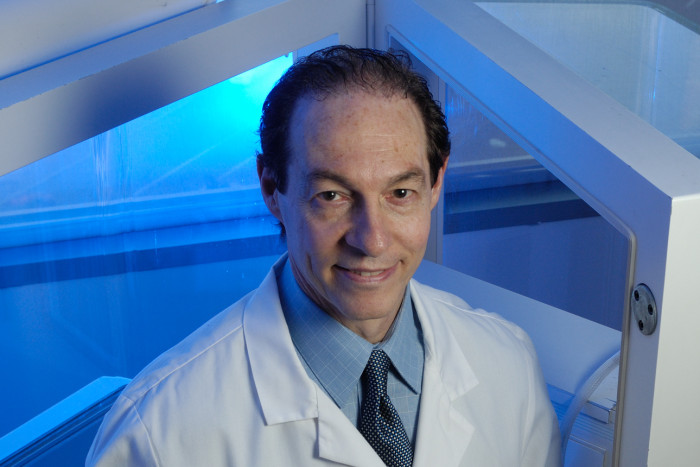Researchers define viral link to chronic obstructive pulmonary disease
Research is uncovering a link between common viral infections and certain forms of lung disease, leading to potential therapies

Michael Holtzman, MD, and his colleagues are studying why patients with asthma have more difficulty with respiratory viruses than people without asthma.
Most of the time a cold is just a cold.
But sometimes a cold or other common viral infection can have long-lasting and serious consequences. Specifically, there is a connection between acute viral infection and the development of chronic obstructive pulmonary disease (COPD).
Researchers have suspected this connection for some time. And in research published in late 2013 in The Journal of Clinical Investigation, a team at Washington University showed that viruses have the ability to reprogram self-regenerating cell populations called stem cells in such a way that their behavior leads to susceptibility to COPD.
“That set of stem cells can renew itself for many years to come,” says Michael Holtzman, MD, pulmonologist at Washington University School of Medicine and member of the research team. “This leads to a situation where there are ongoing drivers for COPD. It’s a relatively simple concept, but it took a long time to figure out.”
The researchers first studied a mouse model and then verified their findings in human lungs obtained during a lung transplantation for COPD.
The cells being reprogrammed are called airway epithelial cells. They produce increased levels of a small protein called cytokine interleukin-33 (IL-33), starting a process that eventually leads to inflammation and production of airway mucus, which characterizes COPD and related respiratory diseases.
Reprogramming airway cells
Holtzman and colleagues have now developed a technology that allows them to isolate reprogrammed airway epithelial cells. And they’ve made progress in figuring out exactly how those cells, when they produce IL-33, stimulate the immune system to cause inflammation and start the disease process.
“This process centers around airway progenitor epithelial cells, or APECs, as well as inflammatory cells, particularly macrophages,” Holtzman says. Macrophages are white blood cells that engulf and digest cellular debris and infectious agents. “We’ve isolated these cell populations in animal models, and we’re in the process of characterizing the same cell populations in humans.”
He says the team has also recently identified a special class of type 2 macrophages that appear to be driving the disease process. He adds that the work has uncovered potential biomarkers and drug targets within specific tissue and immune cells.
Because researchers are starting to understand the connection between viral infection and chronic lung disease, there are important clinical implications.
“Knowing that even transient infections are a mechanism for long-term disease and how that happens allows us to think about discovering new types of drugs,” Holtzman says. “What we often do now is treat symptoms of disease. These new insights will allow us to develop therapeutics that specifically correct and prevent the disease.”
This idea extends beyond lung disease. Holtzman points out that viral infections have also been theorized to cause many other types of chronic inflammatory disease, but the connection to stem cells and inflammatory cells still needs to be determined. Once this kind of disease pathway can be defined, it can guide the approach to other inflammatory diseases as well.






